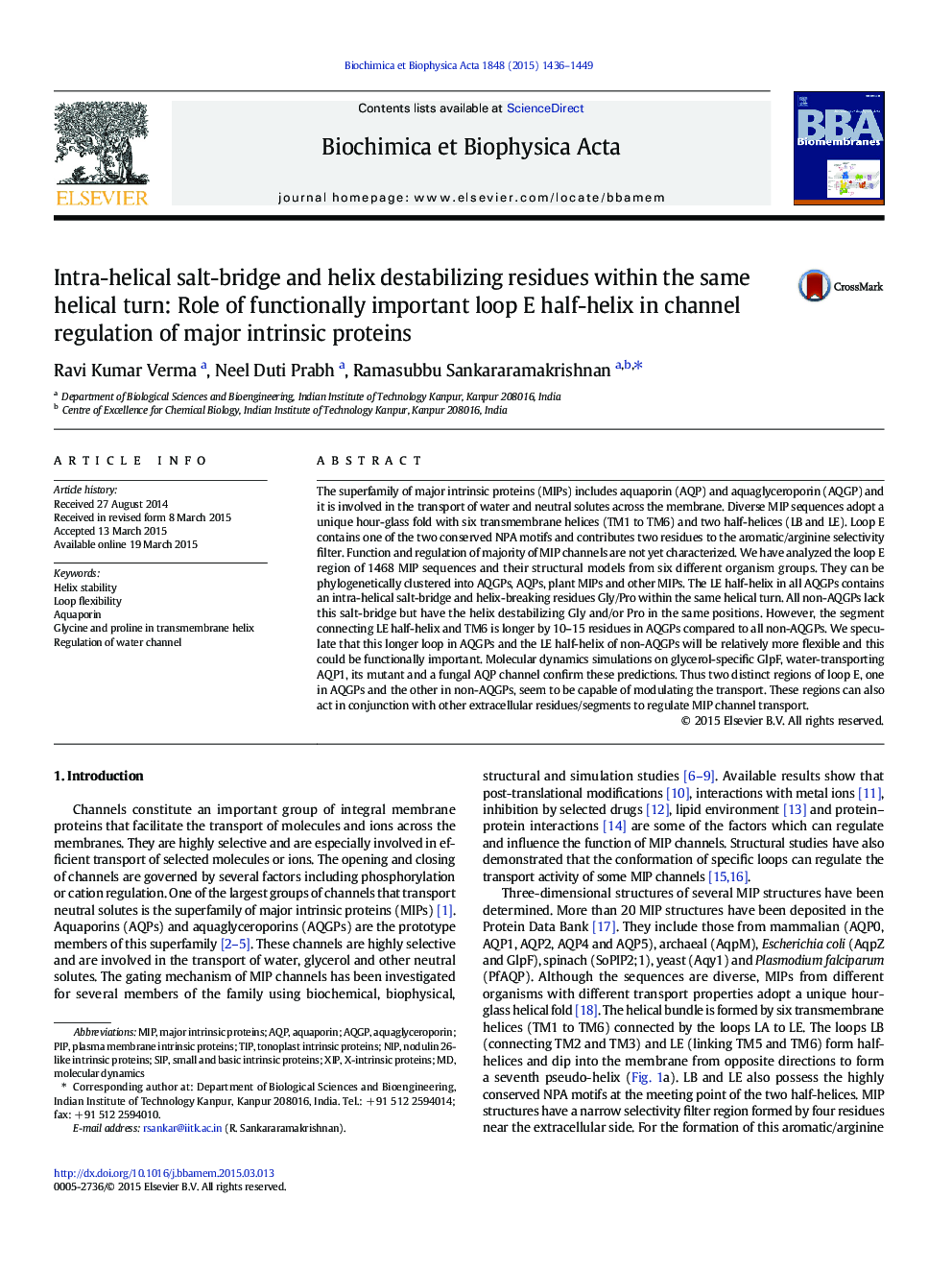| Article ID | Journal | Published Year | Pages | File Type |
|---|---|---|---|---|
| 1944117 | Biochimica et Biophysica Acta (BBA) - Biomembranes | 2015 | 14 Pages |
•Aquaporins (AQPs) and aquaglyceroporins (AQGPs) belong to the major intrinsic protein (MIP) superfamily.•Analysis of more than 1460 MIP sequences reveals that AQGPs have intra-helical salt-bridge in loop E half-helix.•Non-AQGPs lack this salt-bridge but almost all MIPs have helix destabilizing Gly and/or Pro in the same helical region.•The region connecting loop E half-helix and TM6 is longer by 10 to 15 residues in AQGPs compared to non-AQGPs.•The flexibility observed in two different regions of loop E in AQGPs and non-AQGPs could be important in channel regulation.
The superfamily of major intrinsic proteins (MIPs) includes aquaporin (AQP) and aquaglyceroporin (AQGP) and it is involved in the transport of water and neutral solutes across the membrane. Diverse MIP sequences adopt a unique hour-glass fold with six transmembrane helices (TM1 to TM6) and two half-helices (LB and LE). Loop E contains one of the two conserved NPA motifs and contributes two residues to the aromatic/arginine selectivity filter. Function and regulation of majority of MIP channels are not yet characterized. We have analyzed the loop E region of 1468 MIP sequences and their structural models from six different organism groups. They can be phylogenetically clustered into AQGPs, AQPs, plant MIPs and other MIPs. The LE half-helix in all AQGPs contains an intra-helical salt-bridge and helix-breaking residues Gly/Pro within the same helical turn. All non-AQGPs lack this salt-bridge but have the helix destabilizing Gly and/or Pro in the same positions. However, the segment connecting LE half-helix and TM6 is longer by 10–15 residues in AQGPs compared to all non-AQGPs. We speculate that this longer loop in AQGPs and the LE half-helix of non-AQGPs will be relatively more flexible and this could be functionally important. Molecular dynamics simulations on glycerol-specific GlpF, water-transporting AQP1, its mutant and a fungal AQP channel confirm these predictions. Thus two distinct regions of loop E, one in AQGPs and the other in non-AQGPs, seem to be capable of modulating the transport. These regions can also act in conjunction with other extracellular residues/segments to regulate MIP channel transport.
Graphical abstractFigure optionsDownload full-size imageDownload high-quality image (214 K)Download as PowerPoint slide
